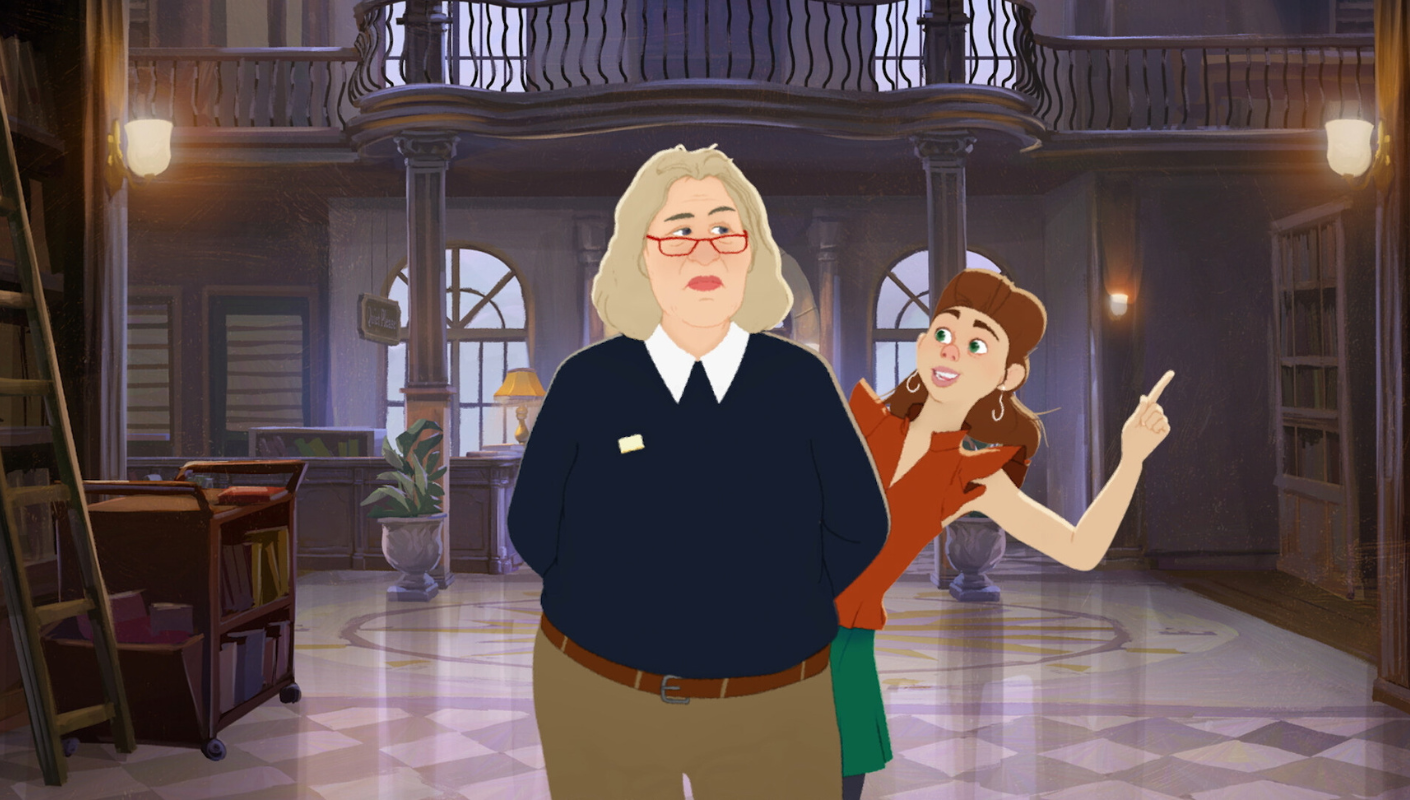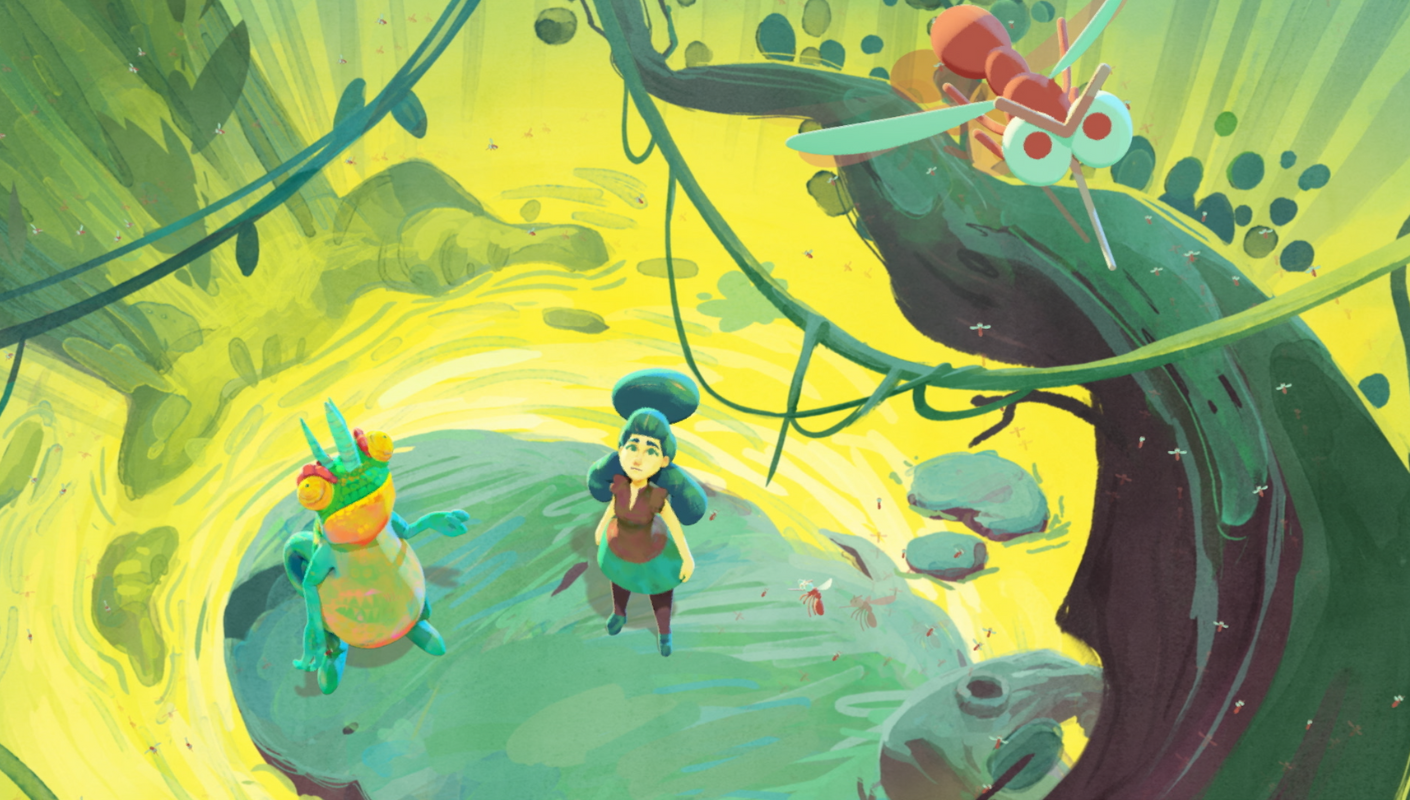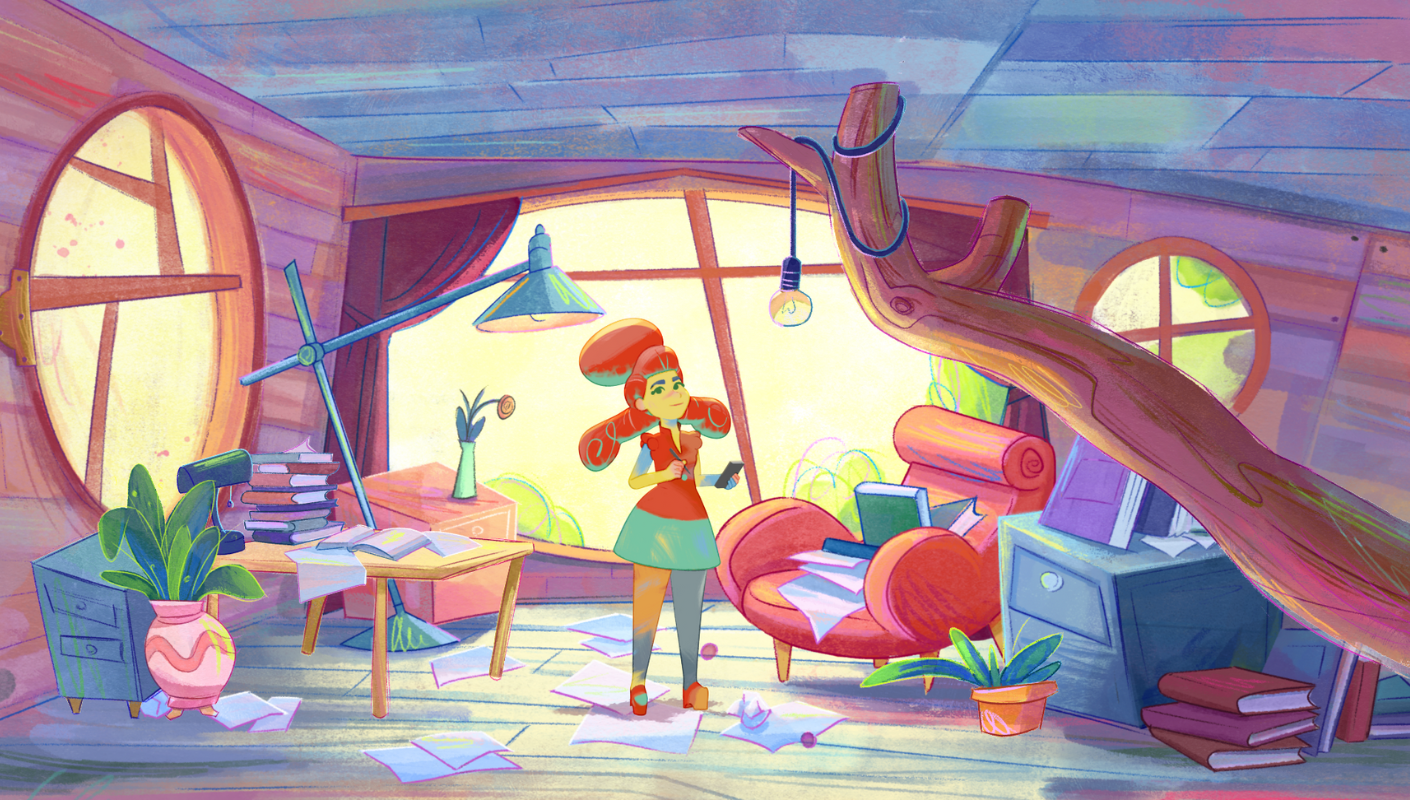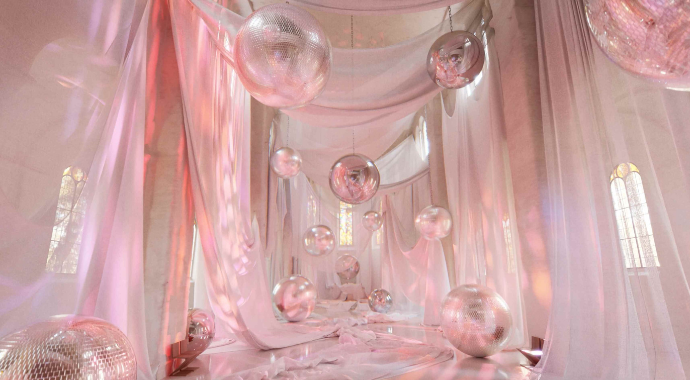Read on to discover Ada, the animated series by Should We Studio, the powerful themes it explores, and how V-Ray helped bring it to life for an audience of over 21 million.
Summary:
- Ada, a series by Elizabeth Cox’s Should We Studio, premieres weekly on the TED-Ed YouTube channel. It fuses storytelling with eye-catching animation.
- The Should We Studio production team relied on V-Ray for rendering, streamlining their workflow despite a small team and tight deadlines.
- As production progressed, the team refined their use of V-Ray, ultimately re-rendering the stroke pass on the first two episodes to enhance quality.
- The series has received praise from TED-Ed's 21 million subscribers, who are delighted by Ada's approach to fascinating, unusual topics and playful animation style.
Ever caught yourself daydreaming about life after the apocalypse? Meet Ada—a recent college graduate pondering this and other existential questions in her self-titled animated series available on TED-Ed.
Elizabeth Cox, founder of Should We Studio, launched Ada as the studio’s first major production—now earning widespread praise from TED-Ed’s 21 million subscribers. Here’s how the small team used V-Ray to bring this 2D and 3D animated series to life.
Bringing Ada to life: Crafting a unique series on a tight budget
After years as a Senior Editorial Producer at TED-Ed—where she wrote over 200 scripts—Elizabeth Cox took the leap and founded Should We Studio to create content that raises awareness of issues shaping our future. "We specialize in tackling consequential topics with exuberance," explains Elizabeth. "For us, exuberance means humor, vibrant settings, and above all, a willingness to engage with the weird."
Ada, the studio’s first major production, is a shining example of this approach coming to life.

The series stemmed from Elizabeth's interest in the ethics of emerging technology and the challenge of making these discussions accessible. "We all have a stake in the future," she says, "but the discourse around this stuff is so off-putting and exclusionary of everyone but a small set of sci-fi/tech enthusiasts with a particular aesthetic."
Eager to find a way to bring these concepts to a wider audience, Elizabeth and her core team of 12 started work on the series. They worked on Ada with no external guidelines and complete creative freedom, creating their own big-picture guidelines for the production:
- Vibe: Sci-fi for non-sci-fi fans
- Subjects: topical yet timeless
- Tone: conversational, humorous but thoughtful
- Worlds: lush, timeless—not overtly futuristic
- Uncertainty: the future depends on our choices
The team set lofty goals for Ada’s look and feel, striving for a handmade feel while finding a realistic way to achieve it within their restraints. "With our relatively small budget and team size and quick turnaround time, we decided pretty early on that the best way to achieve the look we wanted within our constraints was to use a 3D pipeline to achieve a handmade look," says Elizabeth, also adding that projects like Arcane and Spider-Man: Into the Spider-Verse inspired them due to their completely new looks achieved in 3D animation.
After deciding on a 3D approach, the Should We Studio team turned to V-Ray, among other tools, to help execute their vision.
How V-Ray helped shape the look of Ada
Because each episode of Ada contains two distinct worlds: Ada’s reality, which stayed the same throughout the season, and the future she imagines, which looked different in each of the five episodes, the Should We team had to create a total of six distinct visual styles across the series.

Then, when it came to the characters, the team animated them in 3D and rendered them in a flat style to fit with the 2D painted backgrounds, which closely evoked traditional animation. The team didn't render lighting from 3D but instead created lighting using rim lights in After Effects and other 2D tricks. "This simple render is very forgiving and well-suited to our production constraints but creates other problems to solve," Elizabeth explains. The team needed to render a stroke pass for the characters so their internal features, like noses and the distinction between jaw and neck, would not disappear in the flat render. Moreover, the team wanted the stroke pass to be variable, with some strokes appearing and disappearing depending on the characters' movement. It was here that V-Ray was able to come in and render the stroke pass, giving the team the look they needed.

Wing Luo, Should We Studio's Technical Director, spent time experimenting with how to land the right look for the series, ultimately deciding on V-Ray. "With our small team and tight timeline, we needed to minimize manual corrections," Elizabeth says. "So being able to refine our process in V-Ray was essential."
With each episode, the team refined their workflow, mastering V-Ray to meet their vision. By the end of the series, the team’s approach had evolved so much that they made the bold decision to go back and re-render the stroke pass on the first two episodes, ensuring consistency across the entire series.
This wasn’t just a technical improvement—it was a testament to how much the team had grown in their mastery of V-Ray. What began as an experiment in achieving a handcrafted 3D look had become a fine-tuned process that ultimately elevated the series as a whole.
A unique series that resonated with audiences
With the series completed with the help of V-Ray, Elizabeth, and Should We Studio began finding the right distributor for Ada.
Though Elizabeth had worked at TED, Ada wasn’t made for TED-Ed—but after exploring distributors, she found it was the perfect home. "One thing that really appealed to me about hosting Ada on TED’s channels is that the content isn’t paywalled," she explains. "An experience that is free to the viewer is very much in keeping with the mission of Should We Studio and the series."
TED released Ada one episode per week over five weeks, and the response has been overwhelmingly positive. Viewers praised the show’s engaging style, thoughtful exploration of interesting, complex topics, and distinctive animation. Many even called for more episodes, eager to see Ada’s world expand into a longer format.
For Elizabeth, this reaction reaffirmed the studio’s approach to storytelling. "I hope people will take away the following message from Ada: We should invest in the social structures to support transformative technologies in parallel and in proportion to our investment in the technologies themselves," she says. "And I hope Ada models the value of an exuberant spirit of inquiry—a willingness to engage with weird or off-putting questions and reach surprising conclusions."
With the success of Ada, Should We Studio is eager to build on this momentum. "We'd love to create more and longer episodes set in Ada's world in the future," Elizabeth adds. The studio’s next steps will continue to embrace curiosity, challenge ideas, and engage audiences in meaningful ways—proving that bold storytelling, creative animation, and the right tools can bring imaginative series to life.





